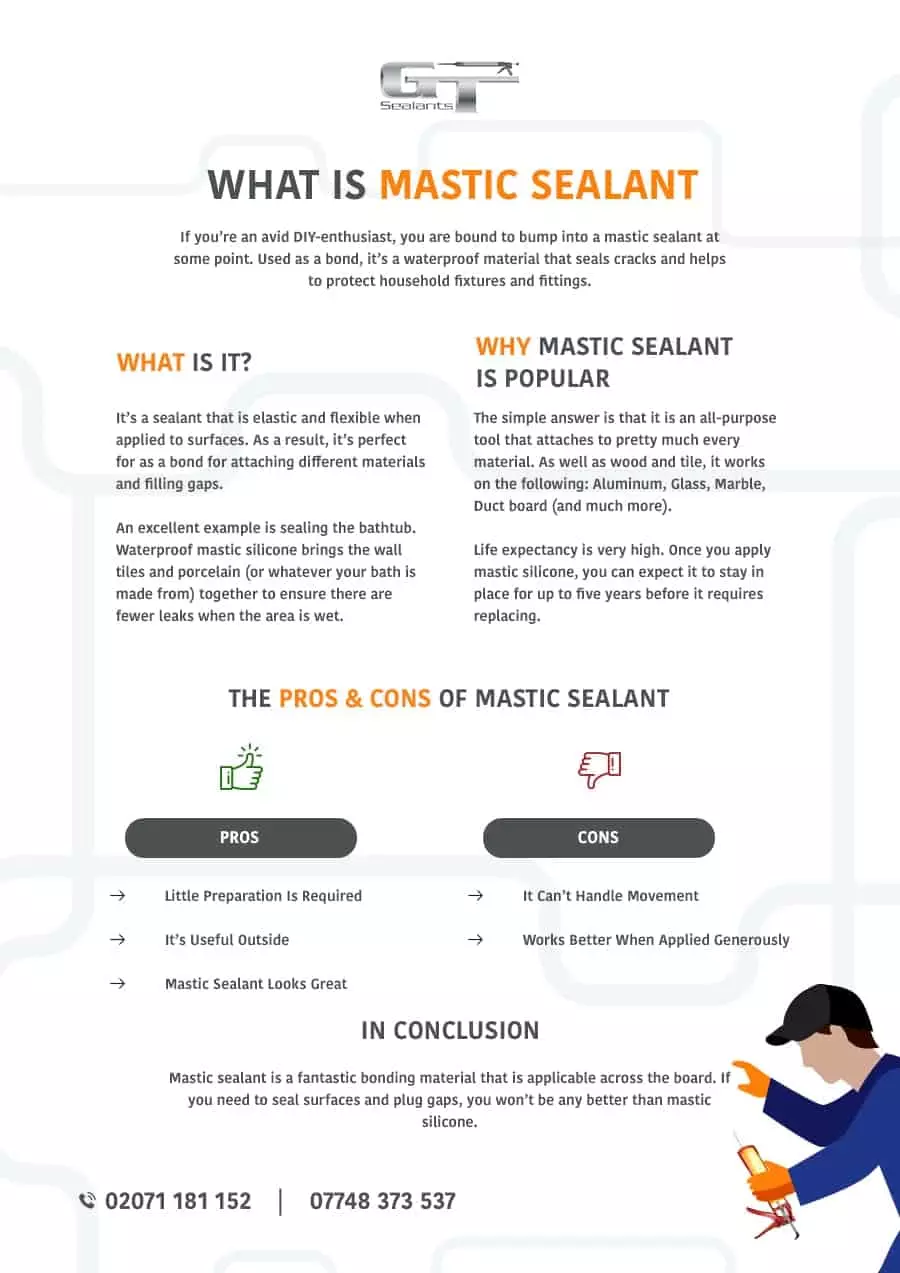If you’re an avid DIY-enthusiast, you are bound to bump into a mastic sealant at some point. Used as a bond, it’s a waterproof material that seals cracks and helps to protect household fixtures and fittings.
Continue reading to find out more about mastic sealant and the pros and cons of using it for DIY projects.
What Is It?
It’s a sealant that is elastic and flexible when applied to surfaces. As a result, it’s perfect for as a bond for attaching different materials and filling gaps. An excellent example is sealing the bathtub. Waterproof mastic silicone brings the wall tiles and porcelain (or whatever your bath is made from) together to ensure there are fewer leaks when the area is wet. Another example is connecting wooden or plastic window frames to your property’s structure.
Why Mastic Sealant Is Popular
The simple answer is that it is an all-purpose tool that attaches to pretty much every material. As well as wood and tile, it works on the following:
- Aluminum
- Glass
- Marble
- Duct board (and much more)
As a result, it’s a standard application for people who prefer to do it themselves rather than use professionals. Still, paid contractors use mastic sealant, too, due to the fact it is flexible and strong. So, whether you’re a novice or an expert, it’s a tool that is used across the board, making it an incredibly popular partner for household and commercial tasks.
Also, life expectancy is very high. Once you apply mastic silicone, you can expect it to stay in place for up to five years before it requires replacing.
The Pros & Cons of Mastic Sealant
The fact that mastic sealant is long-lasting and is applicable to most materials is only the tip of the iceberg. Below, you’ll find a range of pros and cons to help you make an informed decision when it comes to purchasing sealant.
Pros
- Little Preparation Is Required
Because it doesn’t need a primer, you can apply mastic silicone right away, as the area is dry. Waterproof sealant can’t get wet or else the adhesive won’t work correctly. Still, if the surfaces are dry, very little prep is required before pasting it on with a gun.
- It’s Useful Outside
In-house projects are important, but you shouldn’t forget your exterior, either. Unsecure gutters, for instance, will burst and cause leakages inside as well as outside your home. Thanks to its waterproof properties, a mastic sealant is useful for outdoor tasks, too.
- Mastic Sealant Looks Great
Part of repairing your home is making it appear homely. And, while this silicone is thick, it’s also smooth. Therefore, it adds a stylish and rugged design while maintaining its practicality.
Cons
- It Can’t Handle Movement
Constant movement causes chips and cracks in the sealant’s structure. So, you shouldn’t put it somewhere there is lots of pressure.
- Works Better When Applied Generously
As a result, it’s not recommended if you only have a small gap to fill as it can be more stressful than effective.
Conclusion
Mastic sealant is a fantastic bonding material that is applicable across the board. If you need to seal surfaces and plug gaps, you won’t be any better than mastic silicone.



